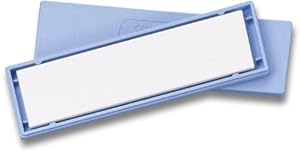At college we have several stones:
coarse diamond stone, the usual type with a grid of small circles on the top,
medium steel block with diamond particles on the top, with one continous surface,
and fine and extra fine ceramic stones which are actually Spyderco, like this pic

But what exactly are they? Spyderco's website doesn't say anything about what they're made from. They are glass-like to the touch and the blade just glides over them.
coarse diamond stone, the usual type with a grid of small circles on the top,
medium steel block with diamond particles on the top, with one continous surface,
and fine and extra fine ceramic stones which are actually Spyderco, like this pic

But what exactly are they? Spyderco's website doesn't say anything about what they're made from. They are glass-like to the touch and the blade just glides over them.
































